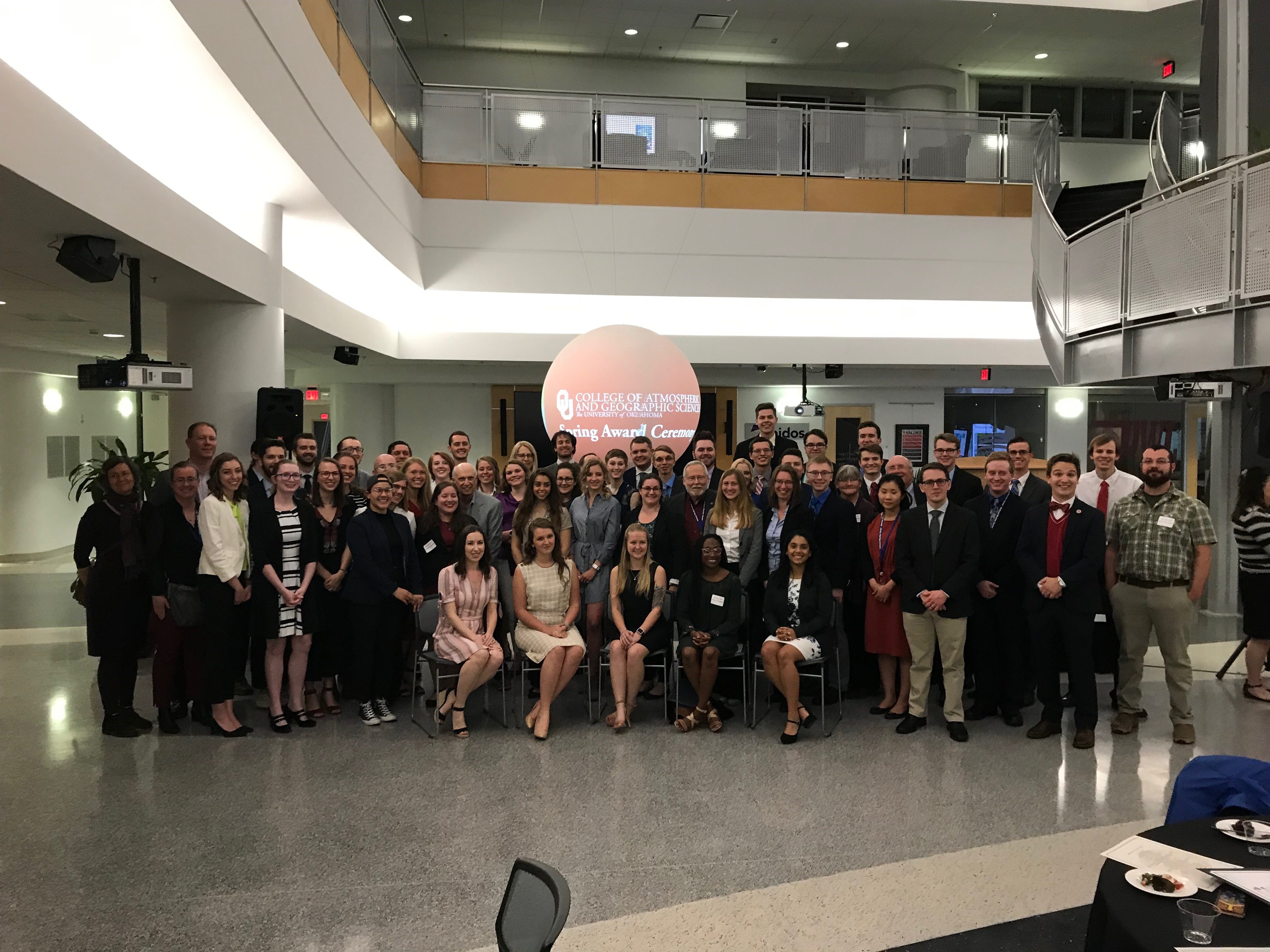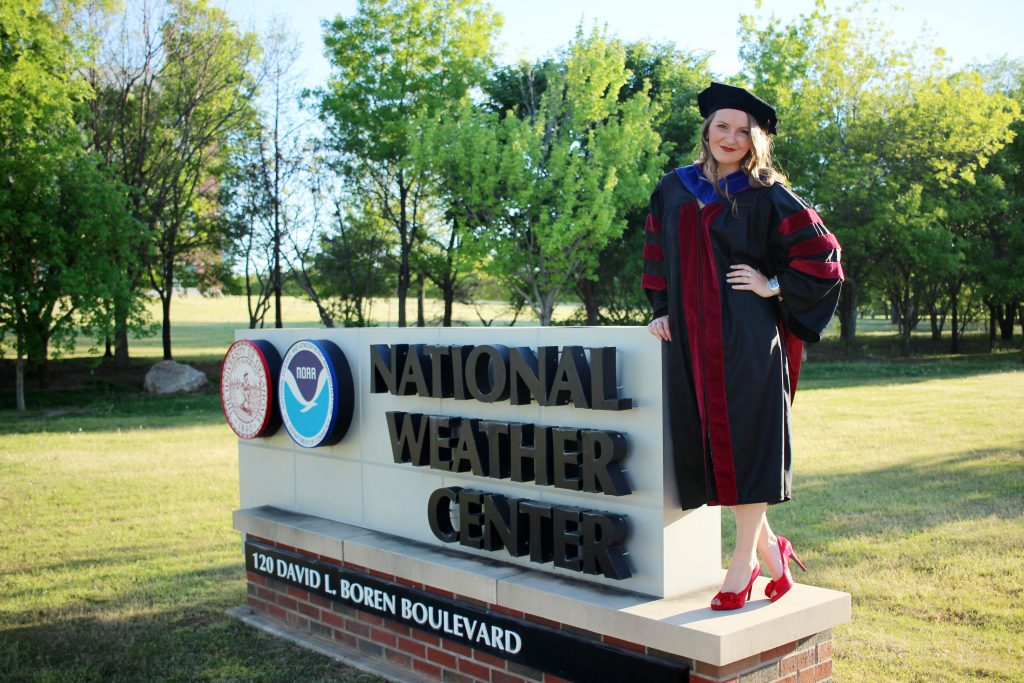The last few weeks have been full of excitement with a publication award, a match with a summer undergrad research mentee, TORUS prep, commencement planning, baby CLAMPS, and my first funded proposal!
PUBLICATION AWARD
I was surprised to learn that my recent MWR publication, The Great Plains low-level jet during PECAN: observed and simulated characteristics, was nominated and selected for the Doug Lilly Award for Best SoM PhD Publication. What an honor to receive an award named after such a pioneer in our field! My pal Josh Gebauer received the Yoshi Sasaki Award for Best SoM MS Publication for his JAS paper, A 1D theoretical analysis of northerly low-level jets over the Great Plains, so our little LLJ group cleaned house!

UNDERGRADUATE RESEARCH MENTEE
I am excited to get the chance to mentor an undergraduate researcher this summer as part of the National Weather Center Research Experience for Undergraduates program. I matched with Michelle Spencer, a senior at Metropolitan State in Denver. We’ll be working together on a project and Great Plains low-level jets and convection initiation! I can’t wait to get started and share our progress!
TORUS PREP
FIELD SEASON IS ALMOST HERE!
As a field scientist focusing on convective weather, the spring is both the best and the worst season. We’re now within ten days of our departure for the TORUS field campaign. I’m excited to get back out in the field, but I’m also feeling a lot of stress about how much work is left for me to do before we go.
TORUS stands for Targeted Observations by Radars and UAS of Supercells. We meteorologists like our acronyms. This one is high-order since UAS is also an acronym for Unmanned Aircraft System. Technically radar is also an acronym, but we pretty much treat it as a noun in its own right these days. The TORUS project is setting out to try to improve the conceptual model of supercell thunderstorms by collecting novel observations of fine scale features. As part of my job at CIMMS/NSSL, I’m working to deploy a truck based Doppler lidar in the near field of supercell thunderstorms. In a later post I’ll cover the details of our system and how we hope to use it. Here, I want to cover a maybe surprising aspect of field work preparation.

In my experience, I’ve come to find that one trait most field scientists share is creative problem solving. Often skill sets that have nothing to do with our formal training is what gets us through the bumps on the road. Most recently, my outside-the-box skill that’s come in handy is sewing. I’ve recently been spending lots of time sitting in the vehicle bay sewing storage pockets together for our cramped truck. Who knew after all these years of schooling, sewing would be one of my biggest field prep contributions?! Now it’s crunch time to get a lot of lidar processing code written in the next few days! Once we’re out in the field, I’ll write more about our system and how it works, so check back for updates about that!
COMMENCEMENT PREP
I also will be participating in OU’s spring commencement since there’s not an equivalent for fall grads. My family and friends are traveling into town for it, and that’s exciting! However commencement is just TWO DAYS before we leave for the field. It will be a wild weekend! I am most excited to get to be hooded for my PhD during the big university-wide commencement at the football field by both of my advisers, Petra and Evgeni. It will be a very special moment.

BABY CLAMPS
I’ve been working with Abbey and Kari at the OU CAGS office and Emily at CIMMS to get a model of our CLAMPS platform built by the incredible folks at the OU Innovation Hub. It’s not 100% complete, but was close enough to be shown off for a couple NWC events this week. The lovingly-dubbed Baby CLAMPS is so amazing, it made my week to see it in action. I’m obsessed with the model. Nathan from the iHub did amazing work on it! The lidar works and runs through a little Rasberry Pi system to show us real point cloud data. The trailer lights work, the lidar lift actually goes up and down, and the thing has true-to-life suspension so we can tow it on an RC truck later on. I’m so excited to get to use it for educational outreach and recruitment work! 


FUNDED RESEARCH
I was notified on Thursday morning that a research proposal I submitted to NOAA was recommended for funding! This is really exciting news, as I am the lead Principal Investigator on the project and it is the first proposal I’ve ever submitted. The work is titled ‘Defining the capabilities of boundary layer profiling systems for operations in the southeastern United States’ and falls under the VORTEX-SE program. It was a great surprise and did a lot to boost my confidence and make me feel a little bit more like a ‘real’ scientist. I’ll definitely be writing more about the work this proposal entails in the future, so keep an eye out!